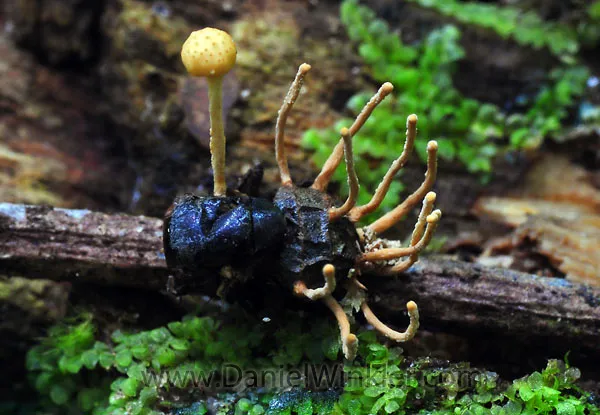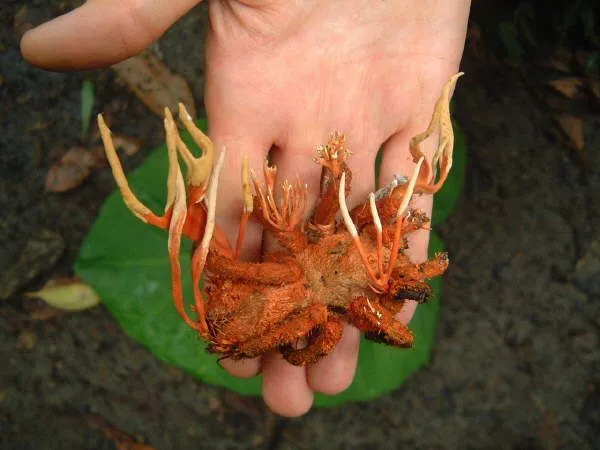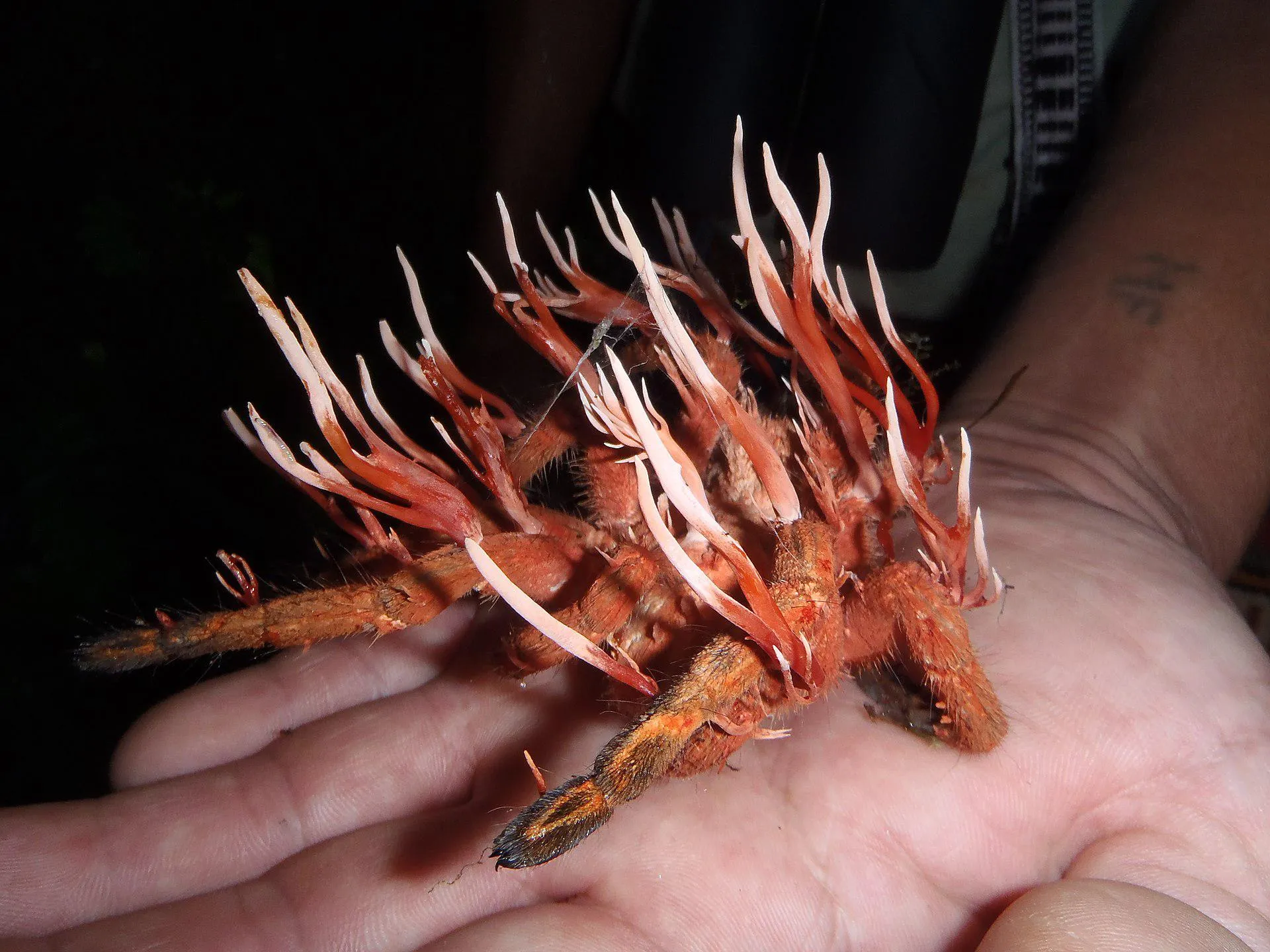Top 5 Facts Cordyceps Fungus Infected Tarantula
The world of fungi is filled with wonders, and none are quite as bizarre or captivating as the Cordyceps. These parasitic fungi have a unique relationship with insects, including the formidable tarantula. When a tarantula becomes infected by Cordyceps, a dramatic transformation begins, fundamentally altering the arachnid’s behavior and physiology. This article will explore the fascinating world of Cordyceps and its interactions with tarantulas, uncovering the top 5 facts about this incredible phenomenon. This topic is a blend of biology, entomology, and a touch of the macabre, demonstrating the intricate and often brutal balance of nature.
What is Cordyceps Fungus
Cordyceps is a genus of ascomycete fungi that are known for their parasitic lifestyles. Unlike most fungi that feed on dead organic matter, Cordyceps specializes in infecting insects and other arthropods. The fungus invades the host’s body, consuming it from the inside out. This process often results in the mummification of the host, with the fungus eventually emerging from the insect’s body to reproduce. The diverse species of Cordyceps target a wide range of hosts, from ants and caterpillars to, of course, tarantulas. These fungi are often found in tropical forests and other humid environments where their hosts thrive. The study of Cordyceps has gained momentum due to their potential medicinal properties, making them a subject of scientific interest.
The Life Cycle of Cordyceps

The life cycle of Cordyceps is as fascinating as it is gruesome. It begins when the fungal spores come into contact with a suitable host, like a tarantula. The spore germinates and penetrates the exoskeleton of the tarantula, entering the body. The fungus then starts to colonize the tarantula’s tissues, feeding on its nutrients and gradually taking over. This stage can take weeks or even months, depending on the species of Cordyceps and the size of the host. Eventually, the fungus begins to alter the host’s behavior, often causing it to climb to a high point, which is advantageous for the fungus’s reproduction. The final stage involves the growth of the fruiting body, which emerges from the tarantula’s body, releasing spores to infect new hosts, thus continuing the cycle. This entire process represents an extraordinary example of host-parasite interaction.
How Tarantulas Get Infected
Tarantulas become infected with Cordyceps in several ways. The most common method is through exposure to fungal spores in their environment. These spores are released from the fruiting bodies of Cordyceps that have already infected other insects or arthropods. When a tarantula comes into contact with these spores, they can adhere to its exoskeleton. If the conditions are right – typically a humid environment – the spores germinate and begin to penetrate the tarantula’s body. The tarantula’s natural defenses, such as its immune system, may initially try to fight off the infection, but Cordyceps is highly effective at evading these defenses. The infection process is often slow, allowing the fungus to gradually take over the tarantula’s body without immediately killing it.
Symptoms of Cordyceps Infection in Tarantulas
The symptoms of Cordyceps infection in tarantulas are quite distinct, and often quite disturbing. One of the first signs is a change in the tarantula’s behavior. It might become lethargic, lose its appetite, and show a decreased response to stimuli. As the infection progresses, the tarantula may exhibit erratic movements or unusual postures. The fungus consumes the internal organs and tissues, leading to physical changes. The tarantula’s body may become discolored or swollen. Eventually, the fungus will produce a fruiting body, which can emerge from various parts of the tarantula’s body, often from the head or the joints of the legs. The tarantula, now effectively a zombie, is unable to feed or defend itself, and its body is eventually consumed by the fungus.
Physical Changes

Physical changes in a Cordyceps-infected tarantula are quite noticeable. The exoskeleton may become brittle and discolored, with a dull appearance. Swelling is a common symptom, as the fungus proliferates within the body cavity. The tarantula’s legs might become stiff and difficult to move, hindering its ability to walk or hunt. In advanced stages, the fruiting body of the Cordyceps emerges, often from the tarantula’s head or joints, drastically changing its physical appearance. These dramatic alterations are a clear indication of the devastating impact the fungus has on its host.
Behavioral Changes
Behavioral changes are among the most striking effects of Cordyceps infection. The infected tarantula’s behavior changes drastically. Initially, the tarantula might become less active, spending more time hiding or resting. Its hunting behavior is severely impaired, and it may stop feeding altogether. In some cases, the tarantula might exhibit erratic movements, wandering aimlessly. The most significant behavioral change is the “summit disease” effect, where the tarantula climbs to an elevated position, which is beneficial for the fungus, as it facilitates spore dispersal. These alterations are a result of the fungus manipulating the tarantula’s nervous system, essentially turning it into a puppet for the fungus’s survival.
The Impact on Tarantula Behavior
The impact of Cordyceps on tarantula behavior is nothing short of remarkable. The fungus releases compounds that interfere with the tarantula’s central nervous system, effectively hijacking its behavior. This control allows the fungus to dictate the tarantula’s actions, ensuring the optimal conditions for its own reproduction. The changes in behavior can include altered hunting instincts, a lack of avoidance behaviors, and the aforementioned “summit disease” – a final, desperate climb to a high point. The tarantula’s natural instincts, such as self-preservation and the drive to reproduce, are overridden, all in the service of the fungus. This is an extreme example of parasitic manipulation and its profound effects on the host’s life.
How Cordyceps Controls Tarantulas

Cordyceps controls tarantulas through a combination of physical and chemical means. As the fungus grows inside the tarantula, it secretes chemicals that interfere with the nervous system, effectively rewiring the arachnid’s brain. These chemicals can alter the tarantula’s perception, motor control, and decision-making processes. The fungus also physically disrupts the tarantula’s internal organs and tissues, further influencing its behavior. The exact mechanisms of control vary depending on the species of Cordyceps. This intricate manipulation allows the fungus to induce specific behaviors that benefit its reproductive cycle. In essence, the tarantula becomes a zombie, its actions dictated by the fungal parasite, a grim example of the power of nature.
Cordyceps Fungus Natural Habitat
The natural habitat of Cordyceps fungi typically involves warm and humid environments, like tropical and subtropical forests. These conditions provide the ideal breeding grounds for both the fungi and their insect hosts. The distribution of Cordyceps is highly dependent on the presence of suitable hosts, such as tarantulas and other arthropods. The fungus is most commonly found in regions with high biodiversity, where a variety of insects and other invertebrates coexist. Research into the specific habitats of different Cordyceps species can provide valuable insights into the complex interactions between the fungi and their hosts, helping scientists understand the delicate balance within these ecosystems. These locations often experience high rainfall and relatively stable temperatures throughout the year.
Cordyceps and its role in the ecosystem
Despite its parasitic nature, Cordyceps plays a crucial role in ecosystems. By infecting insects, it helps to regulate their populations, preventing any single species from becoming overly dominant. The fungus also contributes to nutrient cycling within the ecosystem. As the infected insects die, their bodies decompose, releasing nutrients back into the soil, which benefits plants and other organisms. Cordyceps also serves as a food source for some animals, including certain species of birds and mammals. Furthermore, the study of Cordyceps has led to important advances in medicine and biotechnology. Cordyceps extracts possess bioactive compounds with various potential health benefits. Its impact on ecological processes highlights the interconnectedness of life and the often-surprising roles that even parasitic organisms play in maintaining biodiversity.
In conclusion, the story of a tarantula infected by Cordyceps fungus is a testament to the complexity and wonder of the natural world. From the initial infection to the behavioral manipulation and, ultimately, the death of the host, the process is both fascinating and disturbing. Understanding this interaction provides valuable insights into the dynamics of ecosystems, the evolution of parasites, and the potential for new discoveries in medicine and biotechnology. The Cordyceps-tarantula relationship serves as a stark reminder of the interconnectedness of life and the intricate balance that governs the planet.
